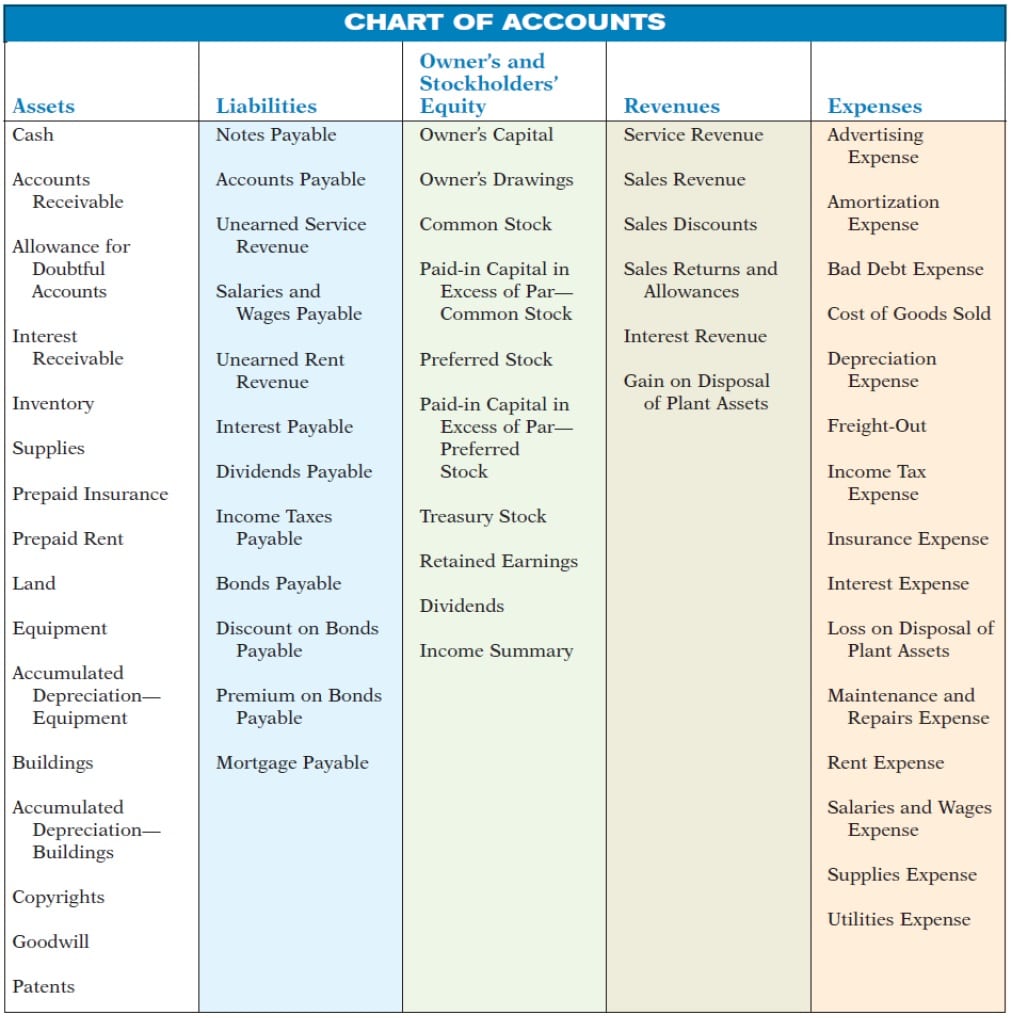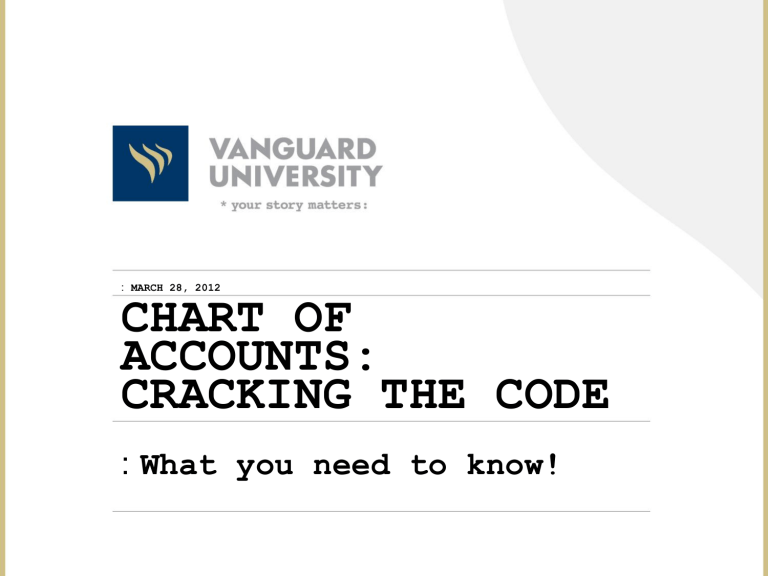Understanding The Chart Of Accounts In Oracle: A Complete Information
Understanding the Chart of Accounts in Oracle: A Complete Information
Associated Articles: Understanding the Chart of Accounts in Oracle: A Complete Information
Introduction
With enthusiasm, let’s navigate via the intriguing subject associated to Understanding the Chart of Accounts in Oracle: A Complete Information. Let’s weave fascinating data and provide recent views to the readers.
Desk of Content material
Understanding the Chart of Accounts in Oracle: A Complete Information

The Chart of Accounts (COA) is the spine of any monetary system, performing as a structured framework for classifying and organizing all monetary transactions inside a company. Within the context of Oracle’s suite of enterprise useful resource planning (ERP) options, the COA performs a vital function in making certain correct monetary reporting, streamlined processes, and efficient monetary administration. This text delves deep into the which means and significance of the Chart of Accounts in Oracle, exploring its construction, functionalities, and implications for companies of all sizes.
What’s a Chart of Accounts?
At its core, a Chart of Accounts is a hierarchical checklist of accounts used to report and summarize all monetary transactions. Every account represents a selected factor of the group’s monetary actions, similar to belongings, liabilities, fairness, revenues, and bills. Consider it as an in depth monetary dictionary, offering a constant and standardized approach to categorize each monetary occasion. This consistency is significant for producing correct and dependable monetary statements.
In Oracle, the COA is not only a static checklist; it is a dynamic and configurable factor deeply built-in throughout the ERP system. This integration permits for a seamless stream of economic information from transaction entry to monetary reporting, eliminating handbook information entry and decreasing the chance of errors. The pliability of Oracle’s COA permits companies to tailor their account buildings to their particular wants and trade necessities, accommodating complicated accounting buildings and various reporting necessities.
Construction and Hierarchy of the Oracle Chart of Accounts:
The construction of an Oracle Chart of Accounts is inherently hierarchical, permitting for detailed categorization and aggregation of economic information. This hierarchical construction usually consists of a number of ranges, every representing a progressively extra granular stage of element. A typical construction may embody:
-
Phase 1 (e.g., Account Sort): This top-level section broadly categorizes accounts, similar to Property, Liabilities, Fairness, Income, and Bills. This stage supplies a high-level overview of the monetary place.
-
Phase 2 (e.g., Account Sub-type): This section additional refines the categorization inside every account kind. For instance, below Property, you may need sub-types like Present Property, Mounted Property, and Intangible Property. Below Income, you may have sub-types like Gross sales Income, Service Income, and Curiosity Revenue.
-
Phase 3 (e.g., Division/Value Middle): This section permits for monitoring monetary information based mostly on organizational items or price facilities, offering priceless insights into departmental efficiency and price allocation.
-
Phase 4 (e.g., Venture): This section permits for monitoring prices and revenues related to particular tasks, offering detailed undertaking profitability evaluation.
-
Phase 5 (e.g., Pure Account): This section typically represents the precise account code, offering probably the most granular stage of element. For instance, throughout the "Money" account, you may need separate accounts for "Petty Money," "Checking Account," and "Financial savings Account."
The variety of segments in an Oracle COA is versatile and depends upon the group’s particular wants and complexity. Some organizations could use just a few segments, whereas others may make the most of all out there segments to attain a excessive diploma of element of their monetary reporting. The pliability of the section construction permits companies to adapt their COA to altering enterprise necessities and reporting wants.
Key Options and Functionalities of Oracle’s COA:
Oracle’s COA provides a spread of highly effective options and functionalities that improve monetary administration:
-
Account Validation: The system ensures that each one transactions are posted to legitimate accounts, stopping inaccurate entries and sustaining information integrity.
-
Account Hierarchies: The hierarchical construction permits for simple aggregation and summarization of economic information at totally different ranges, offering numerous views on monetary efficiency.
-
Account Safety: Oracle permits for assigning safety roles and permissions to manage entry to particular accounts and monetary information, making certain information confidentiality and stopping unauthorized entry.
-
Multi-Forex Help: Oracle helps a number of currencies, permitting organizations to handle transactions and report monetary information in numerous currencies.
-
Intercompany Transactions: The system facilitates the recording and monitoring of transactions between totally different authorized entities inside a company group.
-
Integration with Different Modules: The COA is seamlessly built-in with different Oracle modules, similar to Oracle Basic Ledger (GL), Oracle Payables, and Oracle Receivables, making certain a easy stream of economic information throughout the whole ERP system.
-
Customization and Flexibility: The COA may be custom-made to satisfy the precise wants of a company, permitting for tailoring of account buildings, reporting codecs, and safety settings.
-
Reporting and Evaluation: Oracle supplies a variety of reporting instruments and analytical capabilities to generate numerous monetary studies, together with steadiness sheets, revenue statements, money stream statements, and customized studies.
Implementing and Sustaining an Oracle Chart of Accounts:
Implementing and sustaining an efficient COA in Oracle requires cautious planning and execution. Key concerns embody:
-
Defining the Chart of Accounts Construction: This entails figuring out the variety of segments, the names and descriptions of every section, and the hierarchy of accounts. This could align with the group’s accounting insurance policies and reporting necessities.
-
Information Migration: If migrating from a legacy system, cautious planning is essential to make sure correct and full information migration into the brand new Oracle COA.
-
Consumer Coaching: Ample coaching is important for customers to know the COA construction and tips on how to use the system successfully.
-
Common Evaluate and Updates: The COA must be recurrently reviewed and up to date to mirror adjustments within the group’s enterprise construction, accounting insurance policies, and reporting necessities.
Influence of an Efficient COA on Enterprise Operations:
A well-designed and maintained Chart of Accounts in Oracle considerably impacts numerous points of enterprise operations:
-
Improved Monetary Reporting: Correct and well timed monetary reporting is essential for knowledgeable decision-making. A strong COA ensures the reliability and accuracy of economic statements.
-
Enhanced Compliance: A well-structured COA helps organizations adjust to related accounting requirements and regulatory necessities.
-
Streamlined Processes: Automation of economic processes reduces handbook effort and minimizes the chance of errors.
-
Higher Value Management: Detailed price monitoring and allocation allow higher price administration and improved effectivity.
-
Improved Determination-Making: Correct and well timed monetary data empowers administration to make knowledgeable choices based mostly on dependable information.
Conclusion:
The Chart of Accounts is a elementary part of any profitable monetary administration system, and its significance is amplified throughout the complete surroundings of Oracle ERP options. By understanding its construction, functionalities, and implications, organizations can leverage the ability of Oracle’s COA to optimize monetary processes, improve reporting accuracy, and in the end, enhance enterprise efficiency. A well-planned and meticulously maintained COA will not be merely a technical requirement; it is a strategic asset that contributes considerably to the general well being and success of the group. Investing time and assets in designing and managing an efficient COA inside Oracle is an funding within the long-term monetary stability and progress of the enterprise.






Closure
Thus, we hope this text has offered priceless insights into Understanding the Chart of Accounts in Oracle: A Complete Information. We thanks for taking the time to learn this text. See you in our subsequent article!